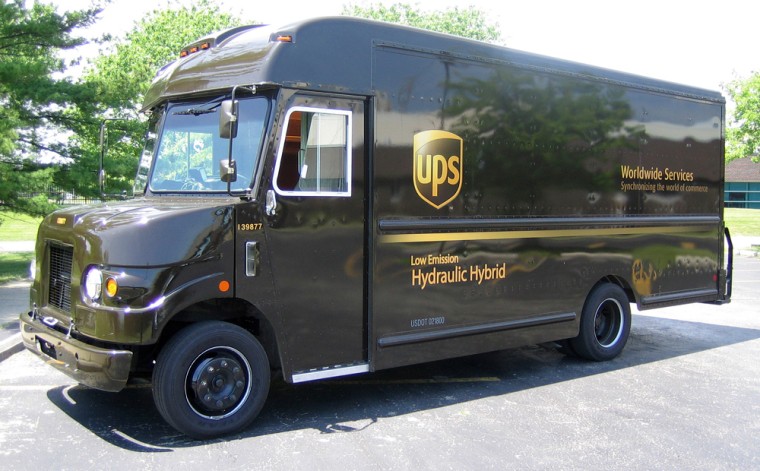There's a new green look for one of the brown trucks operated by United Parcel Service. The delivery giant and the Environmental Protection Agency have teamed up to build what they call "the world's most fuel-efficient and cost-effective delivery vehicle."
Based on EPA-patented technology, the truck’s transmission has been replaced with hydraulics and packaged with a low-emission diesel engine. That hybrid combination yields a 60 to 70 percent savings on fuel use and a 40 percent cut in gases tied to global warming.
The vehicle will be delivering UPS packages across Detroit this summer and while UPS did not say if it would be ordering more of the vehicles, John Beystehner, UPS' chief operating officer, suggested as much after further testing.
"The hydraulic hybrid technology is quite promising and we're eager to see how the vehicle performs in a real-world setting," he said in a statement. "We have led our industry in testing alternative fuel vehicles because fuel conservation is critical to our business. We believe the impact of this initiative will go far beyond our industry."
The system is similar to electric hybrids in that both capture and store energy for use with the engine — for example reusing the energy created when applying the brakes. In this case, though, hydraulic motors and hydraulic tanks are used to store energy.
Good, good, good
For the EPA, the project was about making the most immediate impact on air standards and fuel economy after President Bush called for the country to reduce its dependence on foreign oil.
"We are doing what is good for our environment, good for our economy, and good for our nation's energy security," EPA Administrator Stephen Johnson said in a statement Wednesday.
Delivery trucks pile up the hours and miles with city driving, so they were among the most likely to benefit from a drivetrain that transfers the energy lost in braking into a series of fluid and air pumps that in turn power acceleration.
The EPA estimates that UPS will take less than three years to recover the $7,000 cost of outfitting its trucks with the new hydraulic system by saving money on fuel and by reducing brake wear.
The net savings over a vehicle's 20-year lifespan could exceed $50,000, assuming current fuel prices, the EPA calculated.
The truck was built for the EPA and UPS by Cleveland-based Eaton Corp.
“We work on a lot of different hydraulic equipment for aerospace and this fits in very well,” said Ben Hoxie, Eaton’s engineering manager for the project.
Army interested
Eaton started working with EPA in 2001 to develop the hydraulics. It has already provided a similar system for the Army, which is watching the UPS tests to see if it can use the technology to increase by half the fuel economy in its Humvees.
UPS will keep a close eye on drivability and maintenance issues during the Detroit test runs, but the truck already has a big fan in driver Dave Schuler, who took it for a spin in front of the EPA offices in Washington.
“You’d be surprised how it drives because it makes no noise,” he said. “You wouldn’t think it would have the power for a truck this size.”
